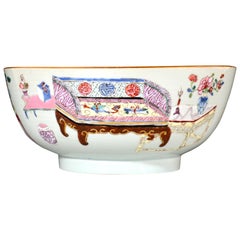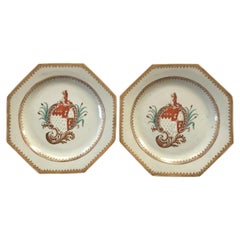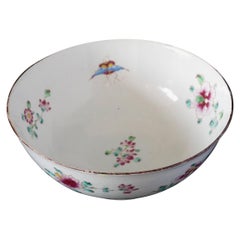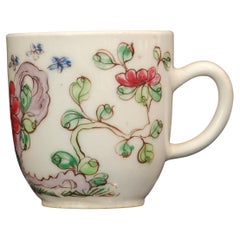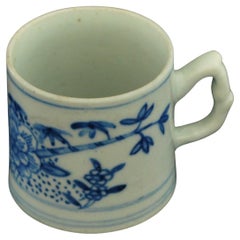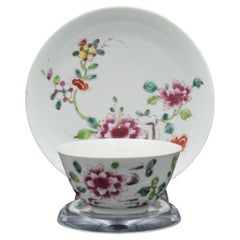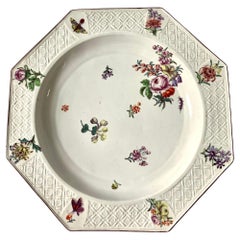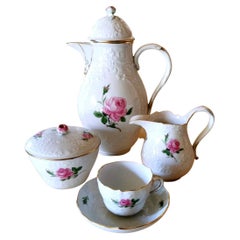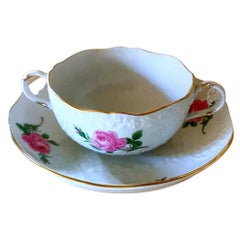Chinese Porcelain Paintings
Antique 1730s Chinese Chinese Export Porcelain
Porcelain
Antique 1770s Chinese Chinese Export Porcelain
Porcelain
Antique Mid-18th Century English Chinoiserie Porcelain
Porcelain
Antique Mid-18th Century English Chinoiserie Porcelain
Porcelain
Antique Mid-18th Century English Chinoiserie Porcelain
Porcelain
Antique Mid-18th Century English Chinoiserie Porcelain
Porcelain
Antique Mid-18th Century English Porcelain
Porcelain
Mid-20th Century German Biedermeier Porcelain
Porcelain
Mid-20th Century German Biedermeier Porcelain
Porcelain
20th Century Portrait Paintings
Porcelain
Antique 1820s English Regency Porcelain
Porcelain
Antique 1730s Chinese Chinese Export Porcelain
Porcelain
Antique Late 19th Century Chinese Chinese and East Asian Rugs
Wool
Antique Mid-19th Century German Baroque Porcelain
Porcelain
Antique Late 18th Century Chinese Rococo Porcelain
Porcelain
Antique Late 19th Century English Late Victorian Porcelain
Porcelain
Antique Early 19th Century Chinese Chinese Export Porcelain
Porcelain
2010s German Chinoiserie Porcelain
Porcelain
21st Century and Contemporary German Black Forest Porcelain
Porcelain
20th Century Chinese Paintings
Porcelain
Antique 19th Century German Paintings
Porcelain
2010s German Country Porcelain
Porcelain
2010s German Country Porcelain
Porcelain
Vintage 1910s English Edwardian Porcelain
Porcelain
2010s German Country Porcelain
Porcelain
2010s German Country Porcelain
Porcelain
2010s German Country Porcelain
Porcelain
21st Century and Contemporary German Country Porcelain
Porcelain
21st Century and Contemporary German Black Forest Porcelain
Porcelain
2010s German Country Porcelain
Porcelain
Antique 1870s German Paintings
Porcelain
2010s German Modern Porcelain
Porcelain
2010s German Black Forest Porcelain
Porcelain
21st Century and Contemporary German Black Forest Porcelain
Porcelain
21st Century and Contemporary German Black Forest Porcelain
Porcelain
21st Century and Contemporary German Country Porcelain
Porcelain
2010s German Country Porcelain
Porcelain
Late 20th Century English Porcelain
Gold
21st Century and Contemporary German Country Porcelain
Porcelain
21st Century and Contemporary German Black Forest Porcelain
Porcelain
2010s German Country Porcelain
Porcelain
21st Century and Contemporary German Country Porcelain
Porcelain
21st Century and Contemporary German Country Porcelain
Porcelain
21st Century and Contemporary German Country Porcelain
Porcelain
21st Century and Contemporary German Country Porcelain
Porcelain
21st Century and Contemporary German Black Forest Porcelain
Porcelain
2010s German Country Porcelain
Porcelain
21st Century and Contemporary German Black Forest Porcelain
Porcelain
2010s German Modern Porcelain
Porcelain
21st Century and Contemporary German Black Forest Porcelain
Porcelain
Antique 1780s English George III Porcelain
Porcelain
2010s German Black Forest Porcelain
Porcelain
21st Century and Contemporary German Country Porcelain
Porcelain
21st Century and Contemporary German Country Porcelain
Porcelain
2010s German Chinoiserie Porcelain
Porcelain
21st Century and Contemporary German Country Porcelain
Porcelain
2010s German Black Forest Porcelain
Porcelain
21st Century and Contemporary German Country Porcelain
Porcelain
21st Century and Contemporary German Black Forest Porcelain
Porcelain
21st Century and Contemporary German Black Forest Porcelain
Porcelain
- 1
- ...
Chinese Porcelain Paintings For Sale on 1stDibs
How Much are Chinese Porcelain Paintings?
- 1stDibs ExpertApril 5, 2022Chinese Canton porcelain is a type of decorative hand-painted ceramic ware produced during the 18th, 19th and 20th centuries in China. Its name comes from the region where it originated. You will sometimes see it referred to as Cantonese porcelain. On 1stDibs, find a selection of Chinese Canton porcelain.
- 1stDibs ExpertApril 5, 2022A Chinese porcelain pillow is a type of ceramic object produced by Chinese artisans. They normally have highly decorative rectangular designs and feature curved tops. Historically, they functioned as headrests, but today they normally serve purely as decorations. On 1stDibs, shop a wide variety of Chinese porcelain ware.
 Lotus GallerySeptember 15, 2020
Lotus GallerySeptember 15, 2020Chinese porcelain can usually be dated by form and decoration. However, copies and forgeries abound, so you should have an expert such as an appraiser, reputable dealer or auction house, or museum examine your porcelain to accurately date it.
- What is Chinese porcelain called?2 Answers
 PAGODA REDOctober 7, 2020
PAGODA REDOctober 7, 2020True porcelain ware was developed in the 11th century at the imperial kilns of Jingdezhen, Jiangxi province, China. These early porcelains of the Song and Yuan dynasties are known as Qingbai or Yingqing ware, defined by a light blue-grey glaze. Later forms of Chinese porcelain include blue and white underglaze ware, Celadon ware, Jun ware, Famille Verte ware, Wucai (Five Color) ware, and Dehua ware, also known as Blanc de Chine.
 Lotus GalleryMarch 17, 2021In China, porcelain is referred to a "cíqì" 瓷器.
Lotus GalleryMarch 17, 2021In China, porcelain is referred to a "cíqì" 瓷器. - 1stDibs ExpertApril 5, 2022Chinese blue and white porcelain is the most common type of decorated porcelain. Its name in Chinese is qinghua. On 1stDibs, you’ll find a collection of antique and modern Chinese blue and white porcelain from some of the world’s top sellers.
- 1stDibs ExpertApril 5, 2022You can sell old Chinese porcelain in a few ways. You can advertise the piece locally or work with an antique shop or auction house. There are also reputable online platforms available for selling online. Shop a collection of Chinese porcelain on 1stDibs.
- 1stDibs ExpertApril 5, 2022To identify Chinese export porcelain, first look for a mark. Most pieces made after 1891 feature a maker's mark that you can research using authoritative online resources. Identifying older porcelain ware is more difficult. A licensed appraiser can provide assistance. You'll find a range of expertly vetted Chinese export porcelain on 1stDibs.
 PAGODA REDOctober 21, 2020
PAGODA REDOctober 21, 2020For thousands of years, China’s court-sponsored porcelain industry has been at the forefront of technical innovation and aesthetic refinement. Exquisite finishes and precision of form gave China an international reputation for fine ceramic wares. Age, shape, glaze, motif, and reign mark are all factors contributing to the value of a ceramic piece, indicative of the maker and the dynastic reign under which the object was created.
- 1stDibs ExpertApril 5, 2022Chinese Kangxi porcelain was popular because of its particular blue colorings. The blue was made using cobalt ore which was imported from Persia. As cobalt ore was a scarce ingredient, the rarity made the porcelain items highly sought after. Shop a collection of Chinese Kangxi porcelain from some of the world’s top sellers on 1stDibs.
 Lotus GallerySeptember 23, 2020
Lotus GallerySeptember 23, 2020The best way to know is to take it to an expert, such as an appraiser, reputable dealer or auction house, or museum
- 1stDibs ExpertApril 5, 2022Chinese ancestor paintings are portraits of the deceased ancestors of a Chinese family. These portraits would be done by an artist to honor and remember their ancestors, and legend had it that if these paintings were properly cared for, the ancestors would bring fortune to the family. Shop an array of Chinese ancestor paintings on 1stDibs.
- Can I paint my Chinese cabinet?1 Answer
 Lotus GallerySeptember 23, 2020
Lotus GallerySeptember 23, 2020Yes, you can paint your Chinese cabinet, though unless it is in poor condition, doing so is usually frowned upon. You will have to sand down the surface beforehand, as most Chinese cabinets have a lacquer finish.
- 1stDibs ExpertMarch 22, 2022Chinese blue and white porcelain is called qinghua, pronounced “CHING-hwa.” Artisans first began producing the porcelain during the Tang and Song dynasties ranging from 609 to 1279. However, the techniques the pottery is most well known for weren't developed until the subsequent Ming era, which lasted until 1644. You'll find a collection of Chinese porcelain on 1stDibs.
 PAGODA REDOctober 7, 2020
PAGODA REDOctober 7, 2020One of the esteemed pursuits of the traditional Chinese scholar was landscape painting, known generally as shān shuǐ. Capturing the beauty of nature within a balanced composition is considered a conceptual feat achieved only by the hand of a master.
